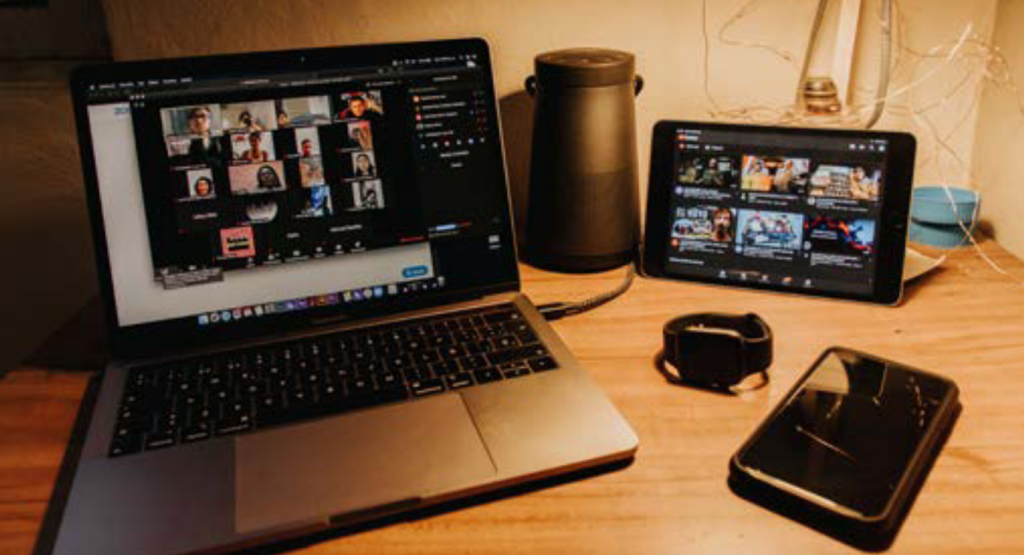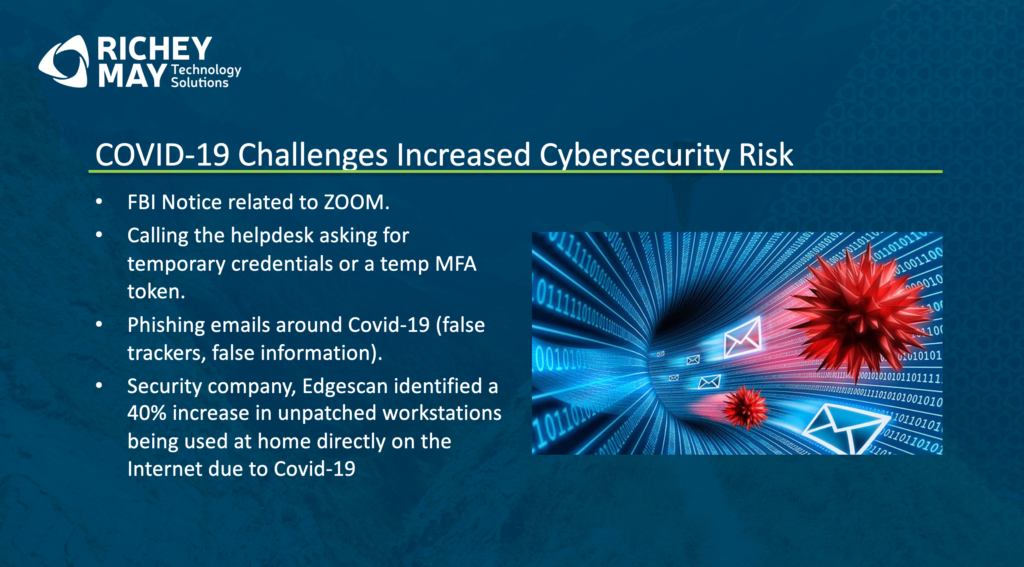Richey May: Virtual Desktops are the New Black Again
For the past year, media and entertainment organizations have faced challenges trying to find the right tools to work remotely amid the COVID-19 pandemic, and many of them have opted to return to virtual desktops, according to JT Gaietto, executive director of cybersecurity for Richey May Technology Solutions.
“I don’t think that it’s a shock to anybody that COVID really changed the way that we fundamentally did business, especially in Hollywood, where a lot of what we do is in-person interaction,” he said Feb. 25, during the WFH/Remote breakout session “Hollywood Stays Home in 2021” at the Content Workflow Management Forum, “M&E’s Premiere Localization Event.”
“What we’ve had to adapt to now over the past year is really making our overall operations geographically dispersed, forcing not only our talent to work in a new way but also forcing management to change their communications styles in how they share work with their employees and the creatives,” he told viewers.
 One challenge from the start was that many employees weren’t used to remote work and “had to adjust their mindset,” he noted. What we have seen, as a result, is “a shift in the culture and how people work, how we interact with each other, how we move our content – not only within our organization but with our partner customers and other clients and, more importantly, how we’re creating that content,” he said.
One challenge from the start was that many employees weren’t used to remote work and “had to adjust their mindset,” he noted. What we have seen, as a result, is “a shift in the culture and how people work, how we interact with each other, how we move our content – not only within our organization but with our partner customers and other clients and, more importantly, how we’re creating that content,” he said.
From a fast-paced collaborative environment, now people are interacting with video and “trying to really establish good ground rules,” he noted.
However, one thing that the industry has “really struggled with is that we’ve pushed our IT teams to really create systems and processes to help us work in this new environment, and they’ve done it really, really fast,” he told viewers.
Much of it has “come at a cost of security,” he noted. There was a “tremendous rush to video conferencing products like Zoom and there [were] a number of security issues” that organizations quickly started facing, he said.
For one thing, “we saw attackers and scammers trying to convince your help desk to send them new passwords or temporary tokens so that they could either access your email or access your online video collaboration platform,” he pointed out.
We’ve also seen a large increase in phishing emails around COVID-19, including false trackers and false information. Now we’re seeing that around the vaccine also, Gaietto noted.
The Return to Virtualization
Many M&E organizations have started looking at virtualizing their productions. One example is Peter Jackson’s Weta Digital effects company in New Zealand, which has gone all in on the cloud, Gaietto noted. It’s relying on new technology from a cloud workflow perspective and also working with some older technologies to try and produce animated content entirely remotely so its creative staff can work remotely around the world, he pointed out.
Virtual desktop technology has been around for the past 20 years but, prior to the “resurgence” in it that we have seen as a result of the pandemic, there have been drawbacks to using it.
 Upfront costs have, for example, been “pretty burdensome” for many organizations, but providing it as a service – Desktop as a Service (DaaS) – lowers the cost, he pointed out.
Upfront costs have, for example, been “pretty burdensome” for many organizations, but providing it as a service – Desktop as a Service (DaaS) – lowers the cost, he pointed out.
There are, however, several factors that organizations must take into account when it comes to deciding on a shift to virtual desktops or not, including: People need mobility wherever they are; there are licensing costs; application compatibility; and security, he said.
When it comes to DaaS, organizations pay for software, hardware and administration as a service. Each organization should have a plan on how much they will operate from the cloud vs. what they want to take responsibility for and this should be taken into consideration before rolling everything out, according to Gaietto.
“You really need to make sure you do your homework with your provider,” he suggested, pointing out specific tools may not be compatible with the system you are using – so don’t sign up for 12 months or an even longer contract without knowing all the necessary details.
One major advantage of DaaS is “you can adapt it as your needs change – you’re not stuck into one specific platform for a period of time,” he pointed out.
Ditch Your Computer for Freedom
“Employees are kind of expecting to be remote now – especially the younger, digital workers,” Gaietto went on to say, discussing the freedom that has been created for employees with their organizations’ offices being closed.
For organizations, meanwhile, “this really enables you to open your borders to allow your employees to be productive outside of the office, while having… containerized and protected… digital assets,” he said.
 Various security issues have increased as a result of everybody working remotely, he said. In particular, “ransomware has been a big issue,” he noted.
Various security issues have increased as a result of everybody working remotely, he said. In particular, “ransomware has been a big issue,” he noted.
However, DaaS from the right provider can provide a higher level of security when compared to what organizations might have built and managed themselves, he pointed out. Many platforms can be configured to meet or even exceed the Trusted Partner Network/Motion Picture Association best practices, he said.
Multi-factor authentication is also commonplace, he went on to note, with many platforms also including patching, vulnerability scanning and security monitoring.
To access the video presentation click here. To download the presentation slide deck click here.
The Content Workflow Management Forum was produced by MESA, the Audio Business Continuity Alliance, Content Localisation Council, Smart Content Council, and the Hollywood IT Society, with sponsorship by Iyuno Media Group, Richey May Technology Solutions, Whip Media Group, Deluxe, Digital Nirvana, Meta, Vubiquity, EIDR, Keywords Studios, Los Angeles Duplication & Broadcasting, Nexus TV, OOONA, Signiant and Titles-On.
